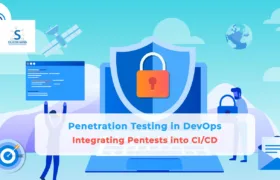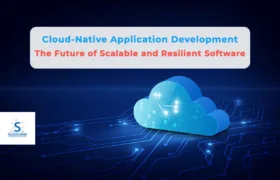Implementing effective IT strategies is crucial for business owners in 2024 as it enables them to stay ahead in a fast-paced digital landscape and capitalize on emerging opportunities. By staying updated with IT trends, businesses can leverage new technologies and tools to enhance productivity, streamline operations, and improve customer experiences. This blog explores five essential IT strategies every business owner should be aware of to thrive in the digital age.
Importance of staying updated with IT trends
In today’s rapidly evolving digital landscape, staying updated with IT trends is vital for any business owner. By actively monitoring and embracing emerging technologies, businesses can gain a competitive edge and seize new opportunities.
By staying informed, business owners can identify and implement the latest innovations that can enhance productivity, streamline operations, and improve customer experiences. This includes adopting cloud services and hybrid IT environments for scalability and flexibility, prioritizing cybersecurity measures through a zero-trust security model, investing in AI and machine learning for business innovation, building a data-driven decision-making culture, and fostering IT agility with DevOps and continuous delivery approaches. Stay ahead of the game by staying updated on IT trends.
Benefits of implementing effective IT strategies
Implementing effective IT strategies can have numerous benefits for businesses. Firstly, it can enhance productivity by streamlining operations and automating repetitive tasks. Secondly, it can improve decision-making processes by leveraging data analytics for strategic insights.
Thirdly, it can enhance the customer experience by implementing AI and machine learning technologies, such as chatbots and predictive analytics. Additionally, effective IT strategies can strengthen cybersecurity measures, protecting valuable data from potential threats.
Lastly, adopting agile methodologies like DevOps and continuous delivery can accelerate time to market and increase efficiency. Overall, implementing effective IT strategies can drive innovation, efficiency, and competitiveness for businesses in today’s digital age.
5 Key IT Strategies Every Business Owner Should Know in 2024
1. Implementing a Scalable and Flexible IT Infrastructure
To meet the ever-changing needs of a business, it is vital to implement a scalable and flexible IT infrastructure. This can be achieved through the utilization of cloud services and solutions, which provide on-demand resources and elasticity.
Additionally, businesses can benefit from adopting hybrid IT environments, combining the advantages of both on-premises and cloud infrastructure. By implementing a scalable and flexible IT infrastructure, businesses can adapt to rapid growth, easily accommodate new technologies, and ensure agility in responding to market demands.
Cloud Services and Solutions
To implement a scalable and flexible IT infrastructure, businesses can leverage cloud services and solutions. Cloud services provide on-demand resources and elasticity, allowing businesses to easily scale their infrastructure as needed. By utilizing the cloud, businesses can also reduce the cost and complexity of managing on-premises hardware and software.
This enables them to focus on core business activities and quickly adapt to changing market demands. Additionally, the cloud provides increased availability and accessibility, allowing employees to access data and applications from anywhere, anytime, promoting remote work and collaboration.
Overall, implementing cloud services and solutions is crucial for businesses to stay agile, save costs, and meet evolving IT needs.
Hybrid IT Environments for Business Agility
Hybrid IT environments, which combine the use of both on-premises infrastructure and cloud services, are crucial for businesses to achieve agility in their IT operations. By leveraging a hybrid approach, businesses can scale their infrastructure as needed while maintaining control over sensitive data and critical operations.
This allows them to adapt quickly to changing market demands, introduce new technologies, and optimize resource allocation. Hybrid IT environments also provide flexibility in choosing the most suitable deployment options for different applications and workloads, ensuring optimal performance and cost-efficiency. Embracing hybrid IT environments is a key strategy for business owners in 2024 to stay agile and competitive in the digital landscape.
2. Prioritizing Cybersecurity and Data Protection Measures
To ensure the security and integrity of your business’s data, it is crucial to prioritize cybersecurity measures. Start by adopting a zero-trust security model, which operates on the principle of verifying every user and device trying to access your network.
Regular security auditing and compliance checks should also be conducted to identify any vulnerabilities and ensure adherence to industry regulations. By implementing these measures, you can mitigate the risk of data breaches, protect sensitive information, and safeguard your business’s reputation. Remember, cybersecurity should be an ongoing priority as threats continue to evolve.
Adoption of Zero-Trust Security Model
To implement a zero trust security model, start by verifying every user and device attempting to access your network, regardless of their location or credentials. This approach assumes that no user or device is inherently trustworthy, making it crucial to continuously authenticate and authorize all connections.
By adopting this model, you can establish strict access controls and reduce the risk of insider threats, external attacks, and unauthorized access to sensitive data. Additionally, regular monitoring and auditing of network traffic will help identify any anomalous behavior and potential security breaches.
Regular Security Auditing and Compliance Checks
Regular security auditing and compliance checks are essential for ensuring the ongoing protection of your business’s sensitive data. By regularly assessing and evaluating your security measures, you can identify vulnerabilities, address any compliance gaps, and stay ahead of potential threats.
These audits can involve reviewing access controls, analyzing network traffic, and conducting penetration testing to identify and resolve any security weaknesses. By proactively monitoring and enforcing compliance standards, you can maintain a strong security posture and protect your business from data breaches and regulatory penalties.

In the realm of IT strategies vital for 2024, Silicon Mind stands as a beacon of innovation, offering cutting-edge solutions crafted to support businesses amidst an ever-evolving technological landscape. By leveraging the expertise and forward-thinking approach of Silicon Mind, business owners can confidently navigate the complexities of modern IT challenges, propelling their enterprises towards growth and prosperity in the digital age. Reach out to Silicon Mind today for a free consultation and embark on a journey towards sustainable growth and digital success.
3. Investing in AI and Machine Learning for Business Innovation
Investing in Artificial Intelligence (AI) and Machine Learning for business innovation is no longer a luxury but a necessity for companies looking to stay competitive in the fast-evolving business landscape of 2024. These technologies have the potential to revolutionize how businesses operate, from streamlining processes and increasing efficiency to providing valuable insights for informed decision-making. By leveraging AI and Machine Learning tools, businesses can unlock new opportunities for growth, innovation, and market expansion.
Moreover, investing in these technologies can help businesses better understand their customers’ needs and preferences through predictive analytics and personalized recommendations. This level of deep understanding allows companies to tailor their products or services to meet customer demands accurately, leading to increased customer satisfaction and loyalty. With AI-driven innovations on the rise, staying ahead of the curve by integrating these technologies into business operations is crucial for sustained success in today’s digital age.
Enhancing Customer Experience with AI Chatbots
To enhance customer experience, businesses can implement AI chatbots. These virtual assistants provide instant responses to customer inquiries, streamline support processes, and improve overall satisfaction. By automating routine tasks, chatbots free up human resources to focus on more complex issues, increasing efficiency.
Moreover, chatbots gather valuable customer data, enabling businesses to gain insights into preferences and behaviors. This information can inform strategies and decision-making. To effectively implement AI chatbots, businesses should ensure they are properly trained and regularly updated to deliver accurate and helpful responses, improving the overall customer experience.
Streamlining Operations with Predictive Analytics
To streamline operations, businesses can leverage predictive analytics. This involves analyzing historical and real-time data to forecast future trends, demand, and potential issues. By understanding patterns and making data-driven decisions, businesses can optimize processes, reduce costs, and improve efficiency.
Predictive analytics can be applied to various aspects of operations, such as inventory management, supply chain optimization, and demand forecasting. By proactively identifying opportunities and challenges, businesses can stay ahead of the curve and make strategic decisions that drive growth and success.
4. Building a Data-Driven Decision-Making Culture

To foster a data-driven decision-making culture in your business, there are a few key steps you can take. First, invest in robust big data analytics tools that provide strategic insights from the vast amount of data available.
Secondly, leverage business intelligence (BI) tools to visualize and interpret data in a way that is easily understandable for decision-makers. by implementing these steps, you can empower your team to make informed decisions based on data rather than relying solely on intuition or guesswork, ultimately driving business growth and success.
Big Data Analytics for Strategic Insights
To harness the power of big data analytics for strategic insights, businesses should invest in robust tools and technologies that can process and analyze vast amounts of data. These tools can uncover patterns, trends, and correlations that provide valuable insights for decision-making.
By leveraging these insights, businesses can make data-driven decisions, identify opportunities for growth, and optimize their operations. It’s important to establish a culture that values data and encourages employees to use data in their decision-making processes. Additionally, businesses should ensure that they have the necessary skills and expertise in data analysis to effectively leverage big data analytics for strategic insights.
Leveraging Business Intelligence (BI) Tools
To leverage Business Intelligence (BI) tools effectively, businesses should focus on three key steps:
Data Integration: Integrate data from various sources into a centralized BI platform for a comprehensive view of business operations.
Analysis and Visualization: Utilize BI tools to analyze data, uncover trends, and generate visual reports that provide actionable insights for decision-making.
Collaboration and Action: Share BI reports across departments and encourage collaboration to drive informed decision-making and align business strategies based on data-driven insights.
By leveraging BI tools, businesses can enhance operational efficiency, identify growth opportunities, and make data-driven decisions for success in today’s competitive landscape.
5. Fostering IT Agility with DevOps and Continuous Delivery
To foster IT agility, businesses should embrace DevOps and continuous delivery practices, which involve integrating development and operations teams to streamline software delivery. By implementing DevOps, businesses can achieve faster time-to-market, enhanced collaboration, and improved software quality.
Continuous delivery further ensures that software updates and new features can be deployed quickly and efficiently, enabling businesses to keep pace with customer demands and market trends. This approach also promotes automation, scalability, and flexibility, allowing businesses to adapt and respond to changing IT landscapes effectively. Embracing DevOps and continuous delivery is essential for businesses looking to enhance their IT agility in 2024 and beyond.
Integrating DevOps for Faster Time to Market
Integrating DevOps for faster time to market involves breaking down silos between development and operations teams, enabling them to work collaboratively and efficiently throughout the software development lifecycle. This approach promotes continuous integration and delivery, allowing businesses to release software updates and new features quickly and consistently. By automating processes and implementing effective tooling, businesses can streamline their software delivery pipelines, reducing manual errors and increasing efficiency. With DevOps in place, businesses can achieve shorter development cycles, faster feedback loops, and ultimately, a competitive advantage in the market.
Automating Workflows with CI/CD Pipelines
To automate workflows with CI/CD pipelines, start by defining your software development process and creating a pipeline that includes stages such as code review, testing, and deployment. Utilize tools like Jenkins, GitLab, or Azure DevOps to set up this automation. Configure triggers to initiate the pipeline whenever there are code changes, ensuring continuous integration and continuous delivery. Test the application at each stage to detect and fix issues early. Finally, deploy the application to production automatically, ensuring efficient and reliable software deployment. Automating workflows with CI/CD pipelines saves time, reduces errors, and improves overall development productivity.
Future trends in IT and business integration
As technology continues to evolve, the integration of IT and business operations will become even more critical for success. Here are some future trends to watch out for in this space:
- Artificial Intelligence (AI) and Automation: AI will play a significant role in automating repetitive tasks, improving efficiency, and enabling data-driven decision-making.
- Internet of Things (IoT):The IoT will connect devices, sensors, and systems, allowing businesses to gather real-time data for better insights and proactive decision-making.
- Blockchain Technology: Blockchain’s secure and transparent nature will revolutionize digital transactions, supply chain management, and data sharing.
- Edge Computing: Edge computing will bring data processing closer to the source, reducing latency, improving real-time analytics capabilities, and enabling faster decision-making.
- Cybersecurity: With the increasing sophistication of cyber threats, businesses will need to invest in robust cybersecurity measures to protect their valuable data and maintain customer trust.
By staying updated on these future trends, businesses can adapt their IT strategies to leverage emerging technologies and gain a competitive edge in the ever-evolving digital landscape.
Conclusion
Recap of the key IT strategies for business owners in 2024
To recap, the key IT strategies that every business owner should know in 2024 include implementing a scalable and flexible IT infrastructure through cloud services and hybrid IT environments, prioritizing cybersecurity and data protection measures with the adoption of a zero trust security model and regular security auditing, investing in AI and machine learning to enhance customer experience and streamline operations, building a data-driven decision-making culture with big data analytics and business intelligence tools, and fostering IT agility with DevOps and continuous delivery by integrating DevOps for faster time to market and automating workflows with CI/CD pipelines. Embracing these strategies will enable business owners to stay competitive and succeed in the digital age.
Read More


